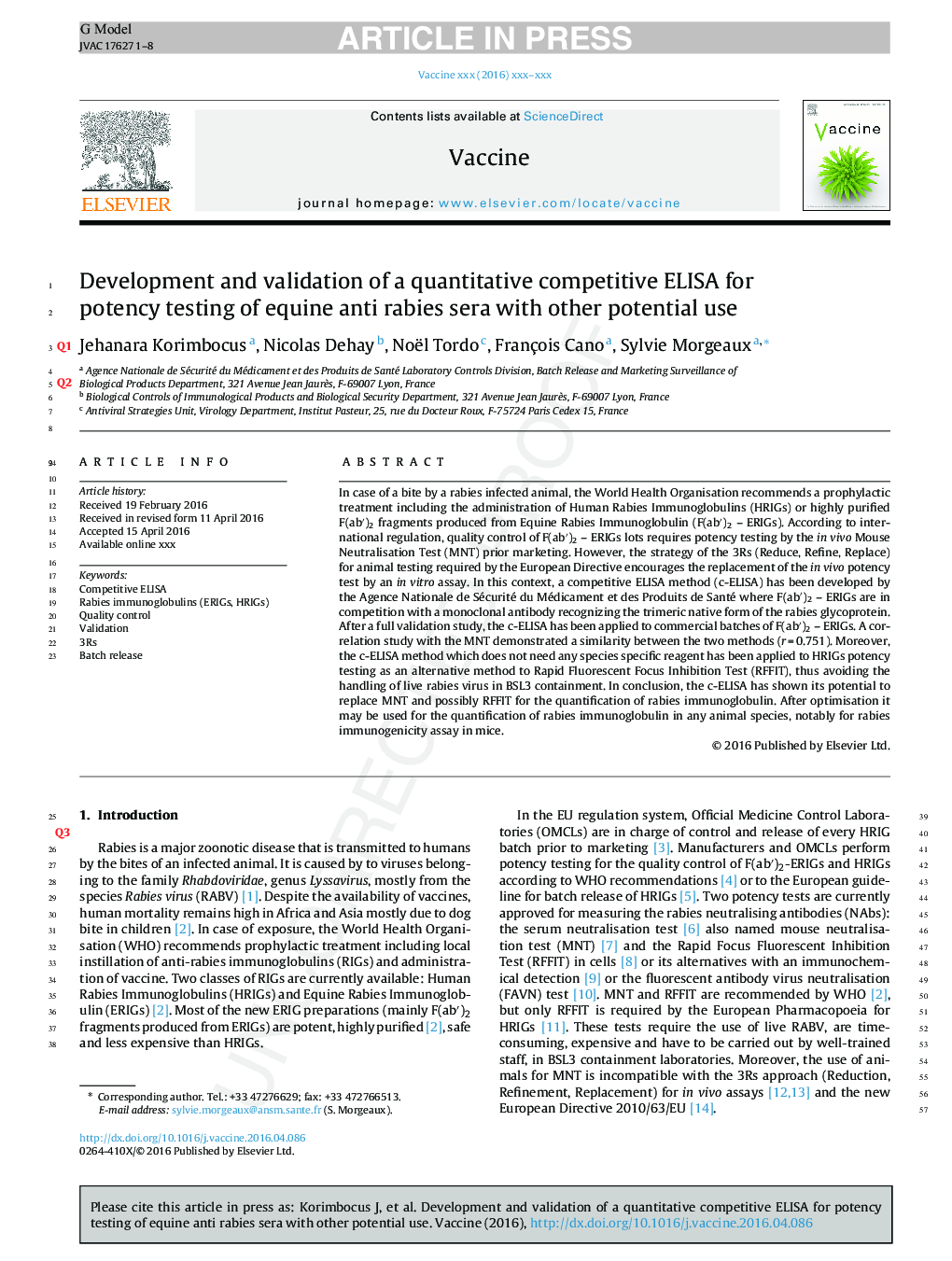| Article ID | Journal | Published Year | Pages | File Type |
|---|---|---|---|---|
| 10962543 | Vaccine | 2016 | 8 Pages |
Abstract
In case of a bite by a rabies infected animal, the World Health Organisation recommends a prophylactic treatment including the administration of Human Rabies Immunoglobulins (HRIGs) or highly purified F(abâ²)2 fragments produced from Equine Rabies Immunoglobulin (F(abâ²)2 - ERIGs). According to international regulation, quality control of F(abâ²)2 - ERIGs lots requires potency testing by the in vivo Mouse Neutralisation Test (MNT) prior marketing. However, the strategy of the 3Rs (Reduce, Refine, Replace) for animal testing required by the European Directive encourages the replacement of the in vivo potency test by an in vitro assay. In this context, a competitive ELISA method (c-ELISA) has been developed by the Agence Nationale de Sécurité du Médicament et des Produits de Santé where F(abâ²)2 - ERIGs are in competition with a monoclonal antibody recognizing the trimeric native form of the rabies glycoprotein. After a full validation study, the c-ELISA has been applied to commercial batches of F(abâ²)2 - ERIGs. A correlation study with the MNT demonstrated a similarity between the two methods (r = 0.751). Moreover, the c-ELISA method which does not need any species specific reagent has been applied to HRIGs potency testing as an alternative method to Rapid Fluorescent Focus Inhibition Test (RFFIT), thus avoiding the handling of live rabies virus in BSL3 containment. In conclusion, the c-ELISA has shown its potential to replace MNT and possibly RFFIT for the quantification of rabies immunoglobulin. After optimisation it may be used for the quantification of rabies immunoglobulin in any animal species, notably for rabies immunogenicity assay in mice.
Related Topics
Life Sciences
Immunology and Microbiology
Immunology
Authors
Jehanara Korimbocus, Nicolas Dehay, Noël Tordo, François Cano, Sylvie Morgeaux,
